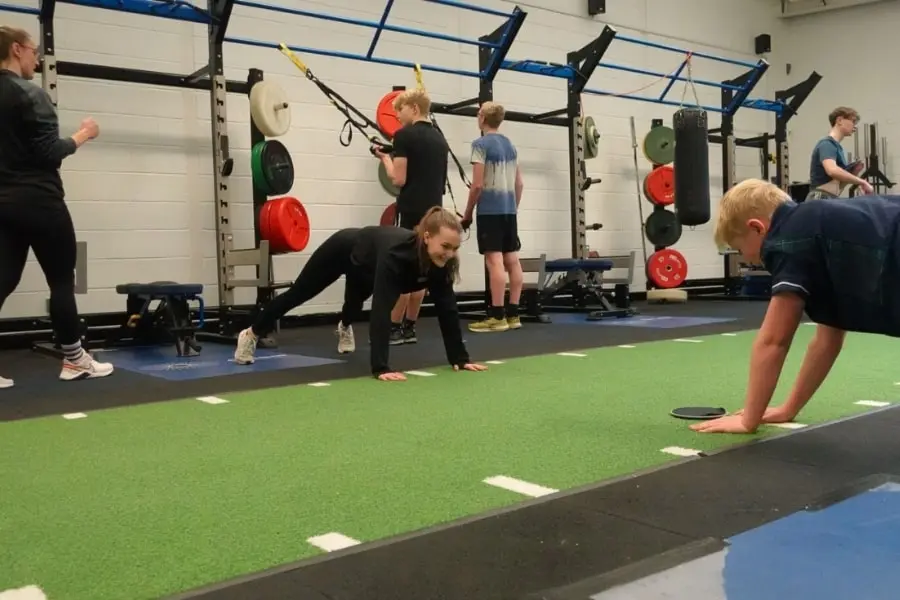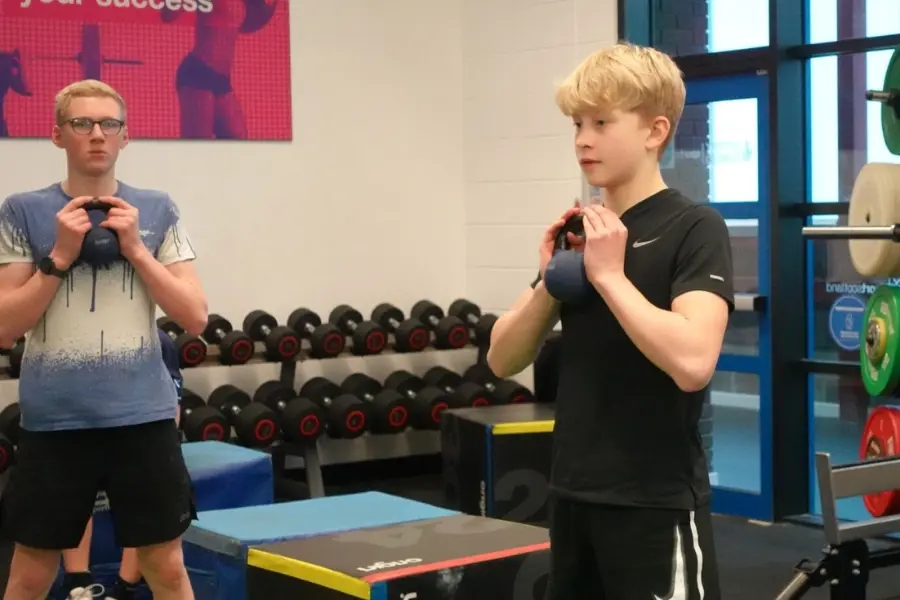As the prominence of resistance training in children and adolescents increases, understanding and prioritising the many aspects of youth physical development becomes paramount. It is important there are enough resources out there for both athletes and families of athletes to familiarise and educate themselves with. We hope this resource can be helpful to even just a few parents or youth athletes who read it through.
What is a Youth Development Programme?
Exploring Resistance Training
First, let’s answer the question of what exactly resistance training is? It is training used to enhance an athlete’s strength, and strength related characteristics e.g. power. Exercises for resistance training may simply be using an individuals’ bodyweight, or they may include the use of resistance bands, various machines and free weights, or a combination of all of these.
For most young athletes, resistance training will have its place alongside an overall training programme for a certain sport or sports (hopefully multiple)! Participating in various sports not only hones different skill sets but also prevents burnout and reduces the risk of overuse injuries associated with early specialisation. This cross-training effect enhances overall physical development and fosters a well-rounded athlete capable of adapting to different challenges. However, for those who may not specialise in any sport, resistance training may just be a stand-alone programme to stay healthy, which is also great!

Why Do Youths Need A Different Training Programme?
So, what makes a youth development programme different from a training programme for adults? An important point to remember is that children are not mini adults, they have countless changes happening in their bodies as they are growing taller, older and biologically maturing, all of which need to be taken into consideration when designing a training programme. For example, think of a 14-year-old male going through a period of rapid growth, he might be unusually clumsy and can’t understand why. This could be due to his limbs growing quickly and learning how this may affect certain movements and techniques in and out of his sport! If this individual is a part of our youth development programme, his height and weight would be tracked regularly to make practitioners aware of this period of rapid growth and can therefore adjust the athlete’s training accordingly.
From regular tracking of height and weight we can also determine whether an athlete is an early, on time, or late maturer. Once this is established, training can be adjusted accordingly and education to the athlete and athletes’ family about which stage they are at can be given.
This periodic profiling will happen all the way through a young athlete’s time on the programme, reducing risk of injury as vulnerable periods are pinpointed during their adolescence.

What Are the Benefits of a Youth Development Programme?
A well-structured strength and conditioning program tailored to the developmental stage of young athletes is instrumental in reducing the risk of injuries and optimising athletic performance. Strength training, when introduced with proper guidance and supervision, helps build a foundation of muscular strength, power, endurance, and bone density. It is not just about building muscles or enhancing athleticism; it encourages lifelong habits of staying active, promoting a healthy lifestyle that will extend into adulthood for a lifetime of well-being.
What we’ve done so far & hopes for the future!
Youth training, both in the gym and for an athlete’s perspective sport, should be a blend of competition and enjoyment. While competition instils valuable lessons such as discipline, teamwork, and resilience, it's crucial not to overshadow the joy of play. The Oriam Youth Development Programme is a positive and fun environment which is essential for maintaining a young athlete's interest and enthusiasm for sports. Striking the right balance between competition and enjoyment ensures that physical development is not only effective but sustainable in the long run.
In the future we plan to introduce further educational content for the OYDP athletes and families. topics such as nutrition, recovery and performance anxiety, to name a few, will be covered for holistic athlete and family knowledge development. Educating young athletes and their parents about multiple topics will create habits that extend beyond the playing field, contributing to their overall health and well-being.
For more information on the OYDP and future Blocks and the application form please visit our dedicated Oriam Youth Development Programme page.
